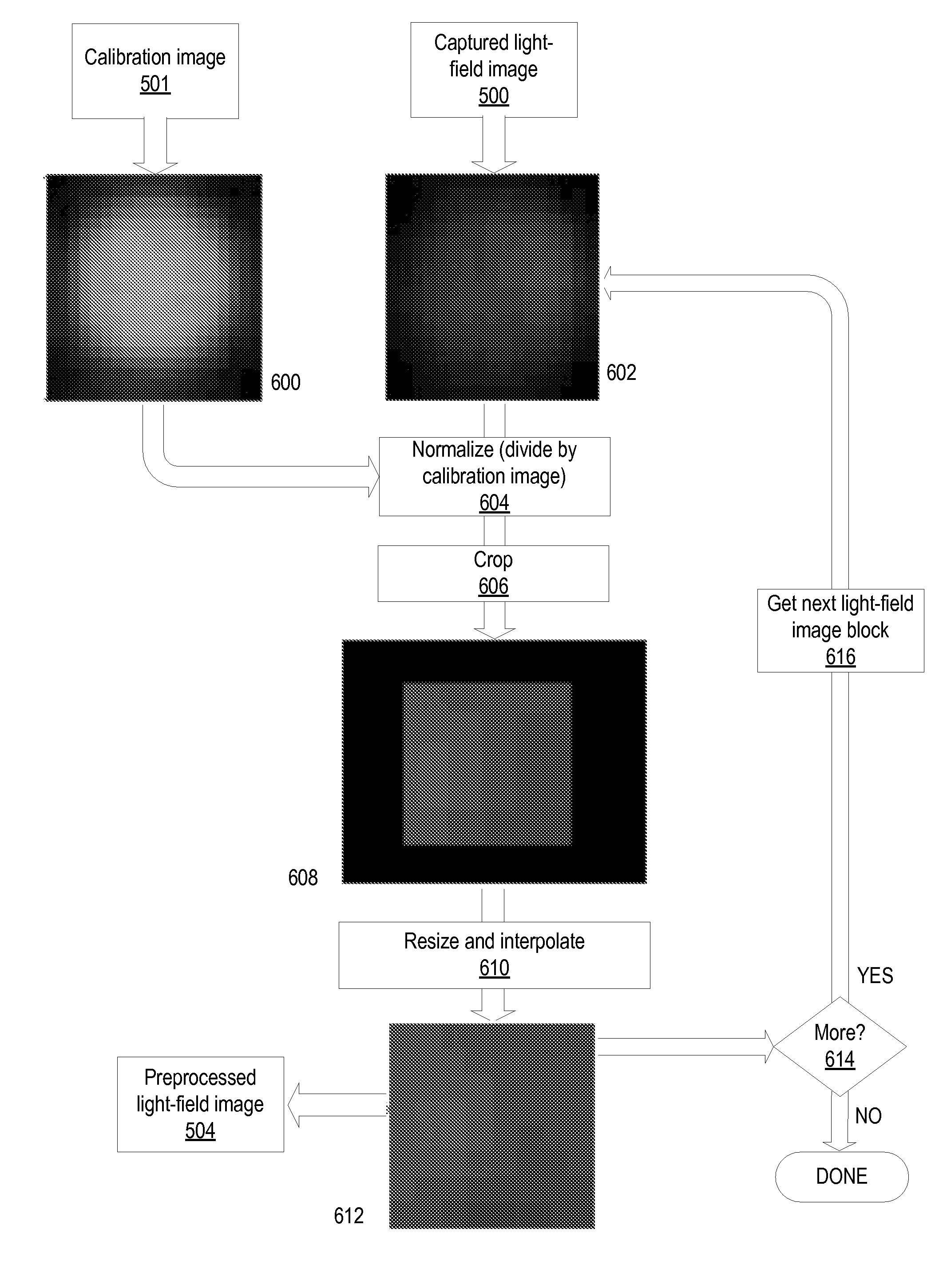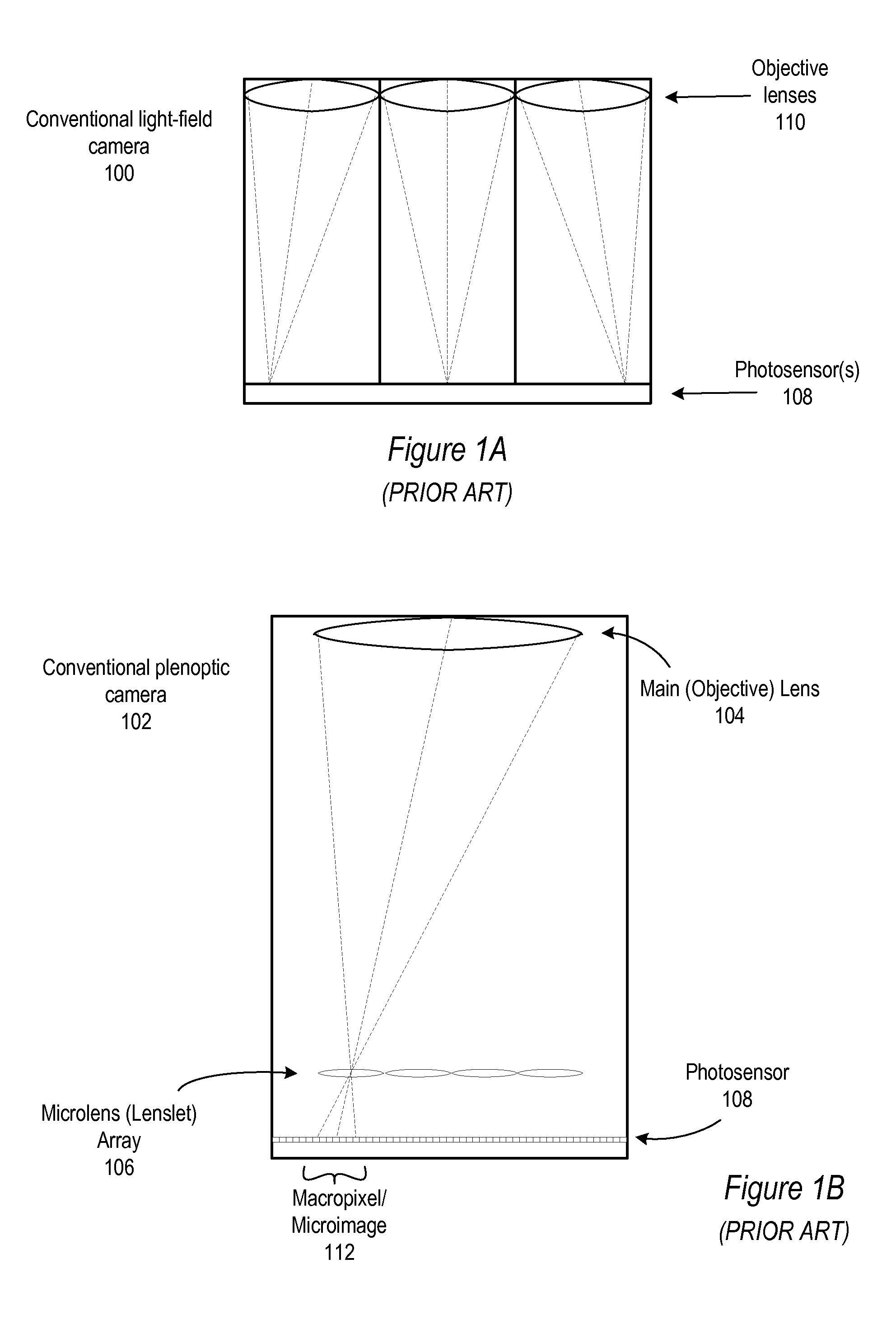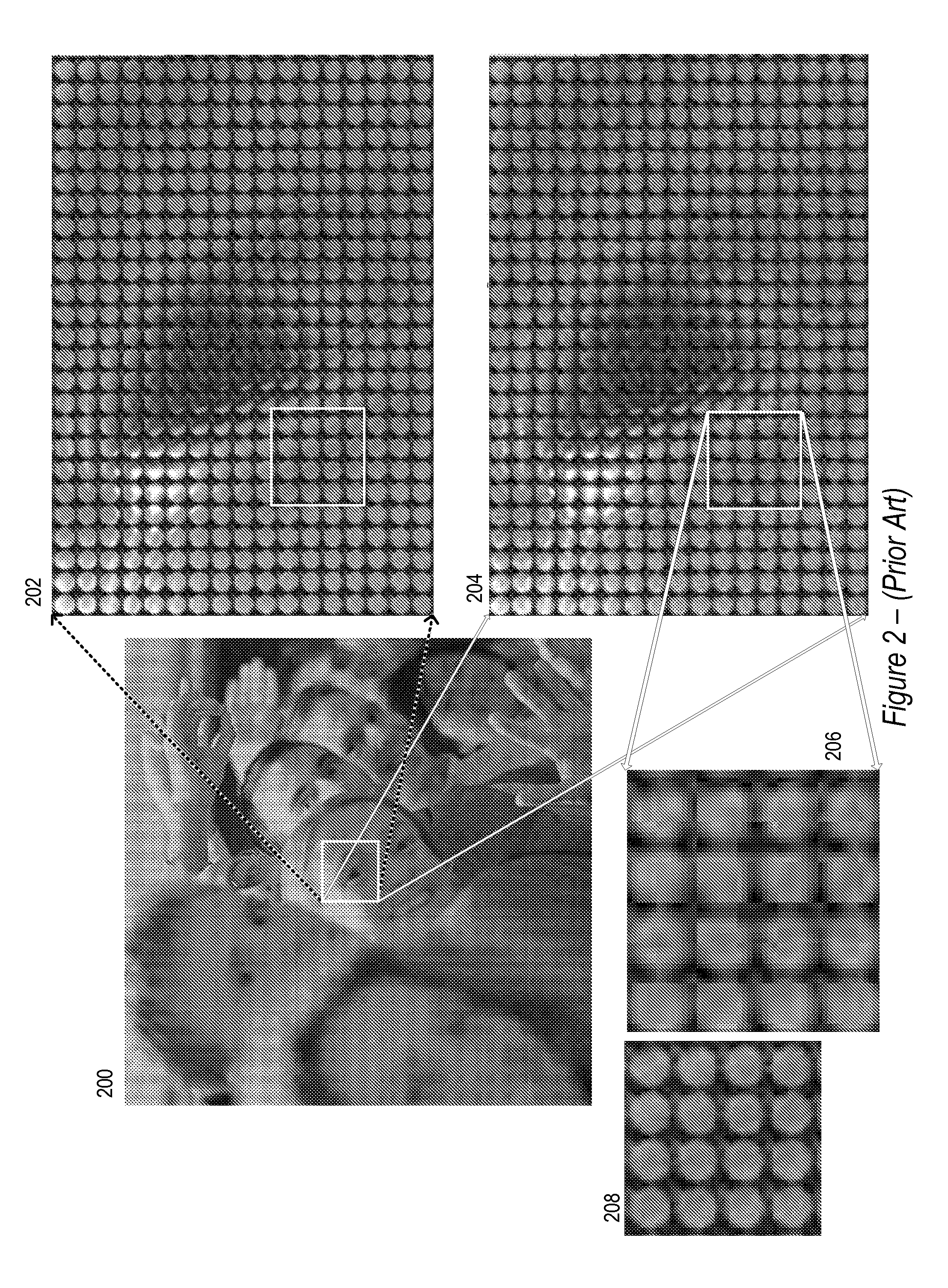Method and Apparatus for Block-Based Compression of Light-field Images
a technology of block-based compression and light-field images, which is applied in the field of block-based compression of light-field images, can solve the problems of inability to capture a large amount of optical information by conventional cameras, inability to capture information about the location of the aperture, and inability to contain information about the directional distribution of light, etc., and achieves high-performance compression
- Summary
- Abstract
- Description
- Claims
- Application Information
AI Technical Summary
Benefits of technology
Problems solved by technology
Method used
Image
Examples
Embodiment Construction
[0031]Various embodiments of a method and apparatus for the block-based compression of light-field images are described. Embodiments may preprocess light-field images into a format that is compatible with the blocking scheme of a block-based compression technique, for example the JPEG compression standard, which is to be used to perform actual compression of the light-field images. Embodiments of a method for the block-based compression of light-field images may be implemented as or in a tool, module, library function, plug-in, stand-alone application, etc. For simplicity, implementations of embodiments may be referred to herein as a light-field preprocessing module.
[0032]Embodiments of the light-field preprocessing module may convert captured light-field images into a suitable format so that blocking artifacts of block-based compression (e.g., JPEG) are not introduced in the final compressed image. The light-field preprocessing module reshapes the angular data in a light-field into...
PUM
 Login to View More
Login to View More Abstract
Description
Claims
Application Information
 Login to View More
Login to View More - R&D
- Intellectual Property
- Life Sciences
- Materials
- Tech Scout
- Unparalleled Data Quality
- Higher Quality Content
- 60% Fewer Hallucinations
Browse by: Latest US Patents, China's latest patents, Technical Efficacy Thesaurus, Application Domain, Technology Topic, Popular Technical Reports.
© 2025 PatSnap. All rights reserved.Legal|Privacy policy|Modern Slavery Act Transparency Statement|Sitemap|About US| Contact US: help@patsnap.com



